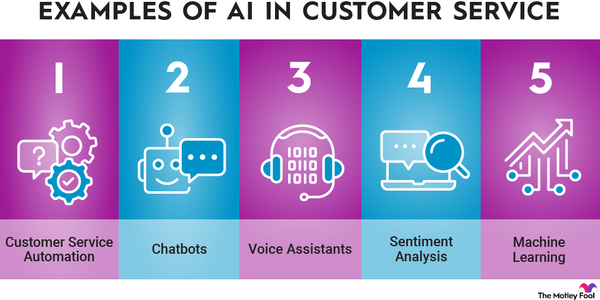Master limited partnerships (MLPs) are limited partnerships (LPs) that trade publicly on a stock exchange. They provide investors with the best of both worlds. MLPs capitalize on the tax advantages of investing in an LP with the liquidity of a publicly traded company (i.e., investors can buy and sell MLPs through their brokerage account).

Understanding MLPs
Understanding master limited partnerships (MLPs)
The IRS treats MLPs as limited partnerships (LPs) for tax purposes. LPs are pass-through entities. That means all profits and losses (as well as any deductions for depreciation) pass through to limited partners who report them on their taxes. MLPs don't pay any corporate taxes.
MLPs must get at least 90% of their income from qualifying sources to maintain their tax-advantaged status. In 1987, Congress limited the sources of qualifying MLP income to the real estate and natural resources sectors. Qualifying income includes earnings realized from the exploration, production, or transportation of natural resources or real estate.
MLPs have a few other notable differences compared to traditional corporations:
- MLPs have units, while corporations have stock or shares.
- MLPs pay distributions while corporations make dividend payments.
- MLPs send investors a Schedule K-1 to file taxes, while corporations send a Form 1099-DIV for tax purposes.
Most MLPs distribute a significant percentage of their income to investors each quarter. Because of that, they are often ideal investments for people seeking to generate passive income.
Best MLP stocks
Industry consolidation has been steadily whittling down the list of MLPs. As of mid-2023, there were about 60 publicly traded MLPs. Most of the biggest MLPs are in the oil and gas midstream (i.e., pipeline) sector.
Here's a look at the best MLP investments:
| Master limited partnership | Industry | Market cap | Distribution yield |
|---|---|---|---|
| Enterprise Products Partners (NYSE:EPD) | Energy midstream | $60.7 Billion | 7.5% |
|
Energy Transfer (NYSE:ET) |
Energy midstream | $51.2 Billion | 9.5% |
| MPLX (NYSE:MPLX) | Energy midstream | $40.9 Billion | 8.8% |
1. Enterprise Products Partners
1. Enterprise Products Partners
Enterprise Products Partners is one of the largest publicly traded partnerships in the country. It operates a diversified and fully integrated energy midstream platform that processes, transports, stores, and exports crude oil, natural gas, natural gas liquids (NGLs), petrochemicals, and refined products.
The MLP's large-scale and diversified midstream operations generate a relatively stable cash flow. As of mid-2023, 77% of its gross operating margin came from fee-based sources like long-term contracts or government-regulated rate structures, limiting its exposure to volume and commodity price risk.
Enterprise Products Partners distributed slightly more than 50% of its cash flow to investors in 2023. It retained the rest to help finance expansion projects, maintain its strong investment-grade bond rating, and repurchase units.
Limited Partnership
The MLP has an excellent track record of distributing cash to its investors. In 2023, Enterprise Products Partners reached the milestone of 25 consecutive years of increasing its distribution per unit. Given its financial strength and the visible growth it has coming down the pipeline (it had $4.1 billion of approved major projects under construction as of mid-2023), Enterprise should be able to continue paying a growing distribution to its investors.
2. Energy Transfer
2. Energy Transfer
Energy Transfer is another large-scale energy midstream company. It operates a coast-to-coast asset base with fully integrated wellhead-to-water services, enabling it to transport oil and gas from production basins to global markets.
The MLP generates a very stable cash flow. Roughly 90% of its earnings in 2023 will come from fee-based sources like long-term contracts and government-regulated rate structures.
Energy Transfer distributes about half its cash flow to investors. It retains the rest to finance its continued expansion and maintain its investment-grade balance sheet.
The MLP's distribution track record isn't as consistent as Enterprise Products Partners. Energy Transfer cut its per-unit payment by 50% in 2020 to conserve cash and strengthen its balance sheet. However, after shoring up its financial position, it returned the payment to its pre-pandemic level by early 2023. Further, it set a target of increasing its per-unit payment by 3% to 5% per year. Energy Transfer expects expansion projects and acquisitions to fuel distribution growth.
3. MPLX
3. MPLX
MPLX is an MLP formed by refining company Marathon Petroleum (MPC -0.56%). It initially created the MLP to operate its logistics assets. However, MLPX has grown into a diversified, large-scale energy midstream company focused on managing logistics and storage (L&S), as well as gathering and processing (G&P) assets.
The company's L&S assets generate a very steady cash flow backed by long-term contracts with companies like Marathon. Meanwhile, the G&P assets produce relatively stable fee-based cash flow as volumes flow through its network of gathering pipelines and processing plants.
MPLX distributes a relatively conservative portion of its steady cash flow to investors (it covered its distribution payment by 1.6 times through the first half of 2023). That enables it to retain cash to fund expansion projects, maintain a strong balance sheet, and opportunistically repurchase units.
MPLX had several expansion projects underway to drive growth. Its L&S segment was expanding its natural gas and NGL long-haul and crude oil gathering pipelines in the Permian and Bakken basins. Meanwhile, its G&P segment was building several new processing plants in the Permian and Marcellus basins to support the growing demand by producers. The projects should increase the MLP's cash flow.
The MLP's growing cash flow has supported a steadily rising distribution. MLPX has increased its distribution per unit every year since its formation in 2012.
Pros and cons
Pros and cons of investing in MLPs
Investing in MLPs has its share of benefits and drawbacks. Some pros of investing in MLPs include the following:
- MLPs offer high cash returns in the form of quarterly distribution payments, making them attractive income investments.
- As pass-through entities, MLPs provide several tax advantages. A portion of distributions are treated as a return on capital and remain tax-deferred until the unit holder sells. The taxes on a sale are subject to capital gains taxes.
- MLPs also offer estate planning benefits. Unit holders can transfer MLP units to beneficiaries tax-free with no step-up basis if they gift the units. Meanwhile, if a unit holder dies, they can pass their units to their heirs tax-free.
MLPs also have some cons, including:
- MLPs can complicate an investor's taxes. MLPs send a Schedule K-1 form (usually later in the tax-filing season) that can create extra work when filing taxes.
- Because MLPs are already tax-advantaged, investors cannot own them in most tax-deferred (or tax-free) accounts like a traditional IRA or Roth IRA.
- MLPs have limited capital appreciation potential. Most of the returns investors earn come from cash distributions instead of unit price appreciation.
Related investing topics
Should you invest?
Should you invest in master limited partnerships?
MLPs provide investors with the tax advantages of a partnership and the liquidity of a publicly traded company. These pass-through entities typically distribute a significant percentage of their income to investors, making them ideal investments for those seeking to collect passive income.
However, MLPs have their drawbacks. They can complicate an investor's taxes, aren't allowed in tax-advantaged accounts, and only offer minimal capital appreciation potential. Investors need to be sure that they understand MLPs before they add any to their portfolios.
FAQs on MLPs:
What is a master limited partnership?
A master limited partnership (MLP) is a publicly traded partnership for tax purposes.
What is an example of an MLP?
Enterprise Products Partners is an MLP. The energy midstream company is one of the country's largest publicly traded partnerships or MLPs.
What is the key difference between a limited partnership (LP) and a master limited partnership (MLP)?
MLPs are a type of LP. The key difference is that an MLP is a publicly traded company, while other LPs are private business partnerships.
Matthew DiLallo has positions in Energy Transfer and Enterprise Products Partners. The Motley Fool recommends Enterprise Products Partners. The Motley Fool has a disclosure policy.
































































































































































































































